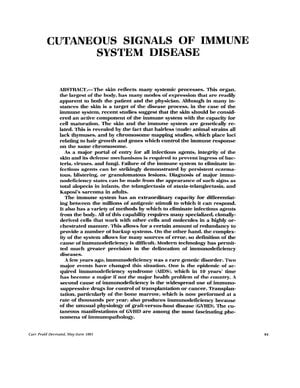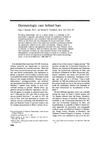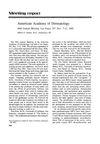Cutaneous Signals of Immune System Disease
May 1991
in “
Current problems in dermatology
”

TLDR Skin issues can indicate immune system problems.
The document discussed how the skin, as the body's largest organ, reflects systemic processes and acts as an active component of the immune system, capable of cell maturation. It highlighted the genetic relationship between the skin and the immune system, noting that hairless animal strains lack thymuses and that loci for hair growth and immune response genes are on the same chromosome. The skin's integrity is crucial for preventing infections, and immunodeficiency can manifest as persistent skin lesions. Major immunodeficiency states can be diagnosed through skin signs like total alopecia in infants and Kaposi's sarcoma in adults. The complexity of the immune system allows for many sources of error, making the cause of immunodeficiency difficult to define. Advances in technology have improved the precision in diagnosing immunodeficiency diseases, which have become more common due to the AIDS epidemic and the use of immunosuppressive drugs. The document also noted the significant impact of transplantation and graft-versus-host disease on immunodeficiency, with cutaneous manifestations being a key area of study in immunopathology.




